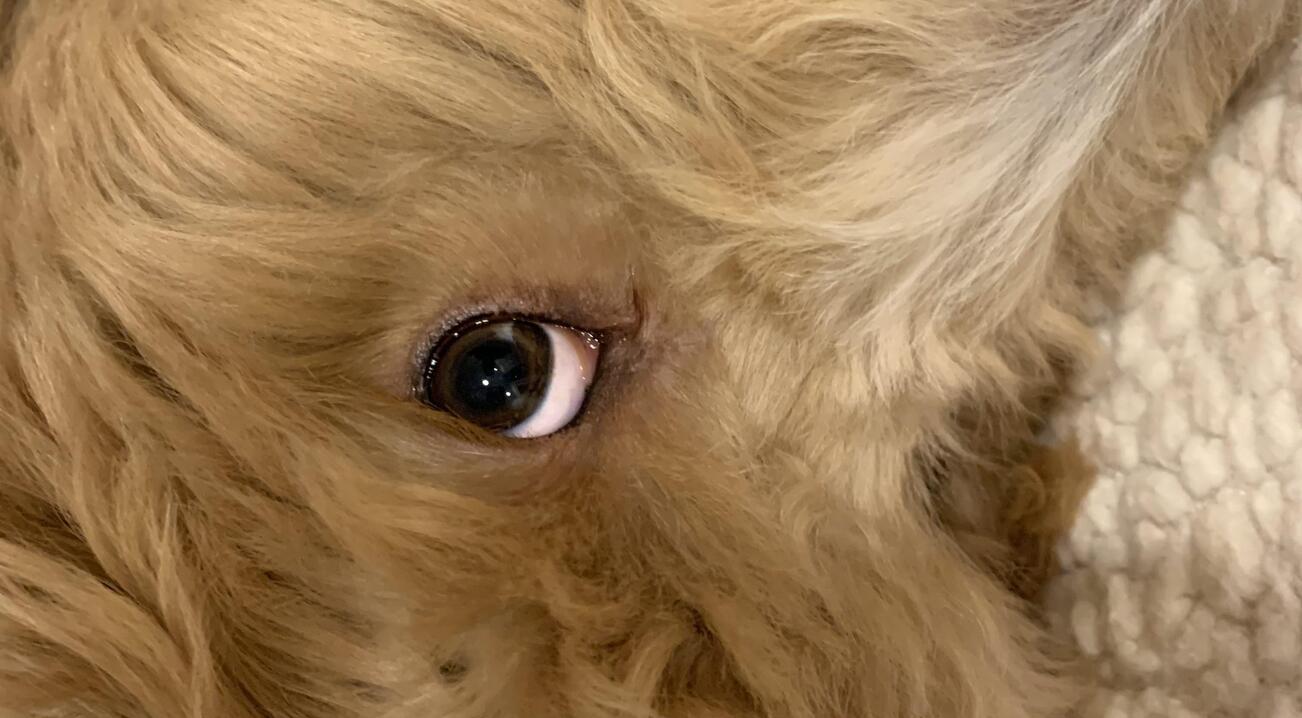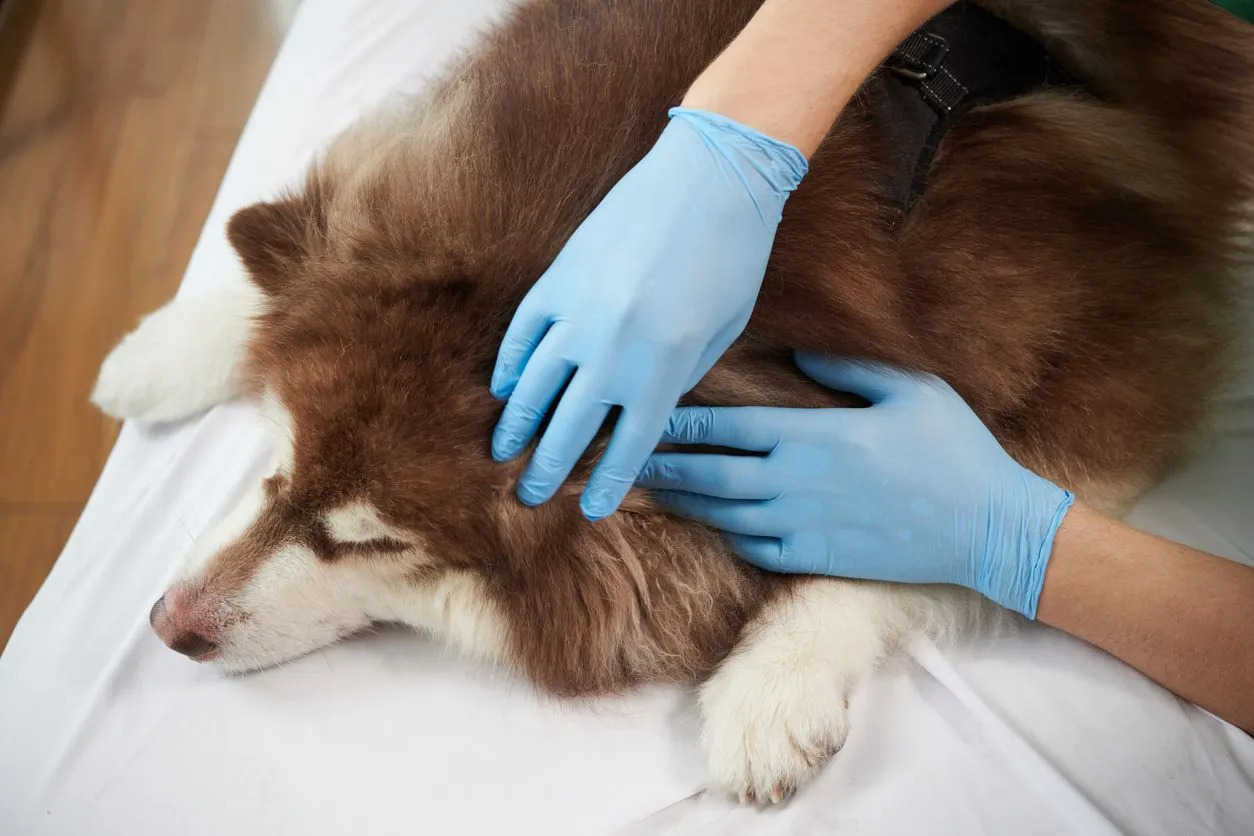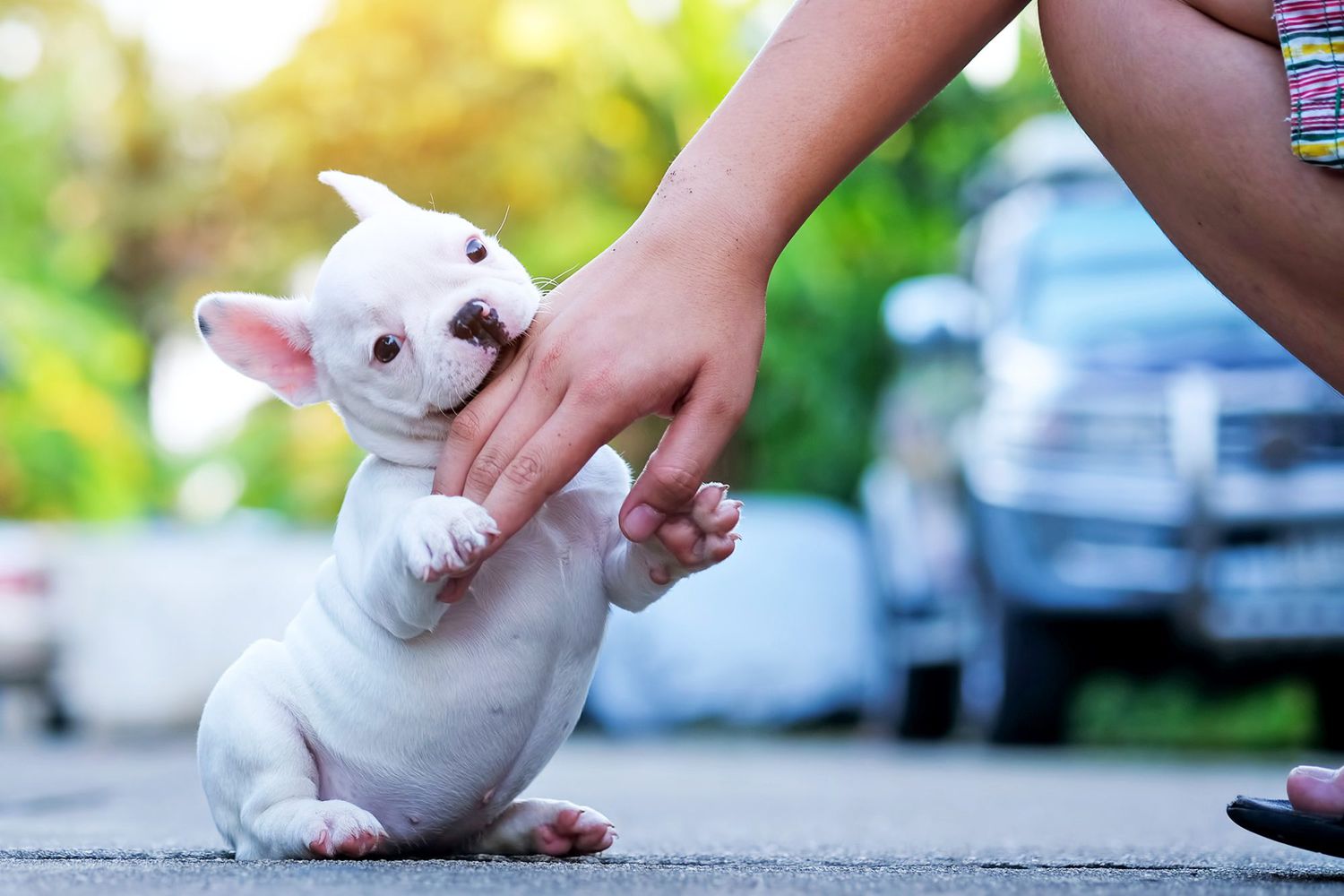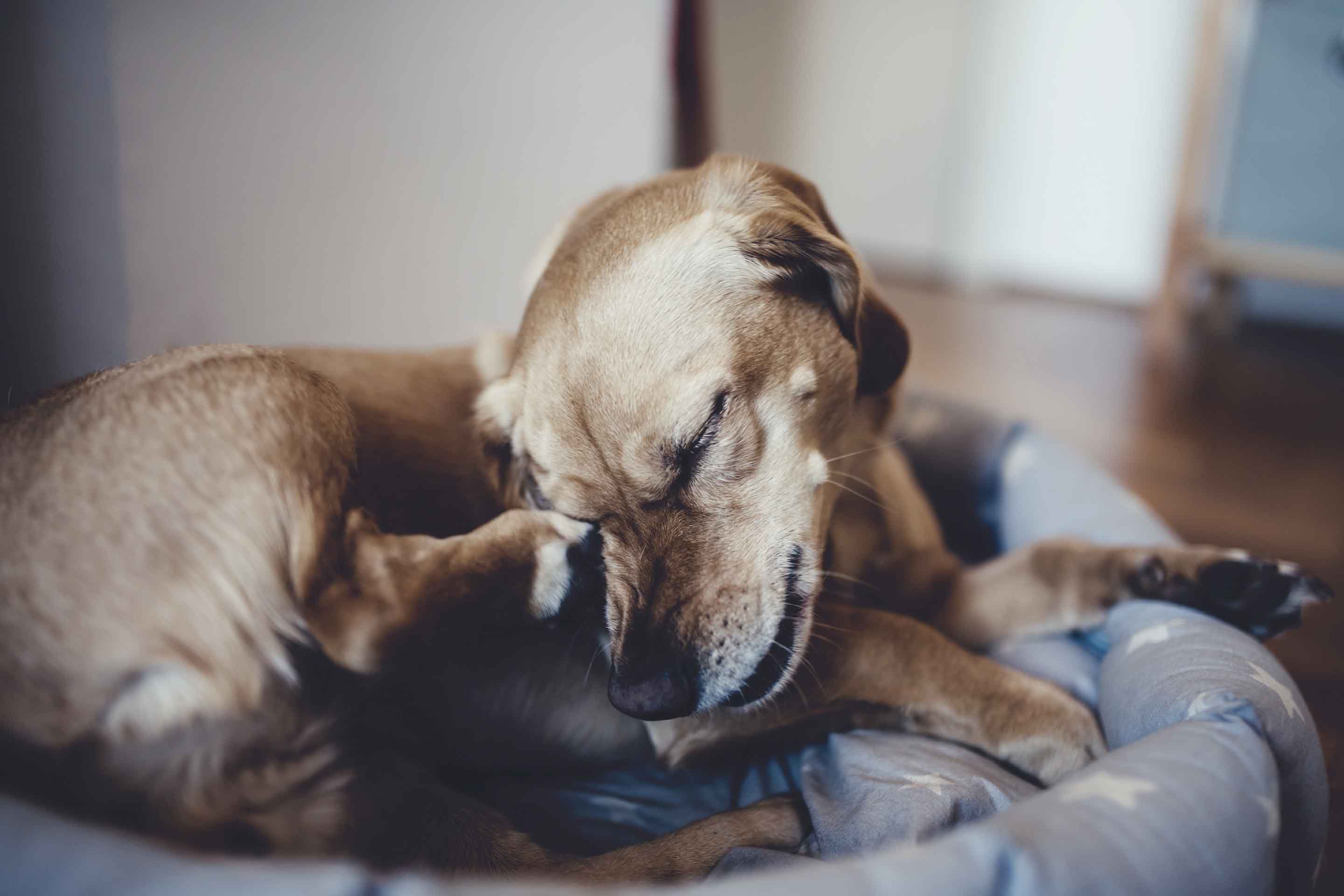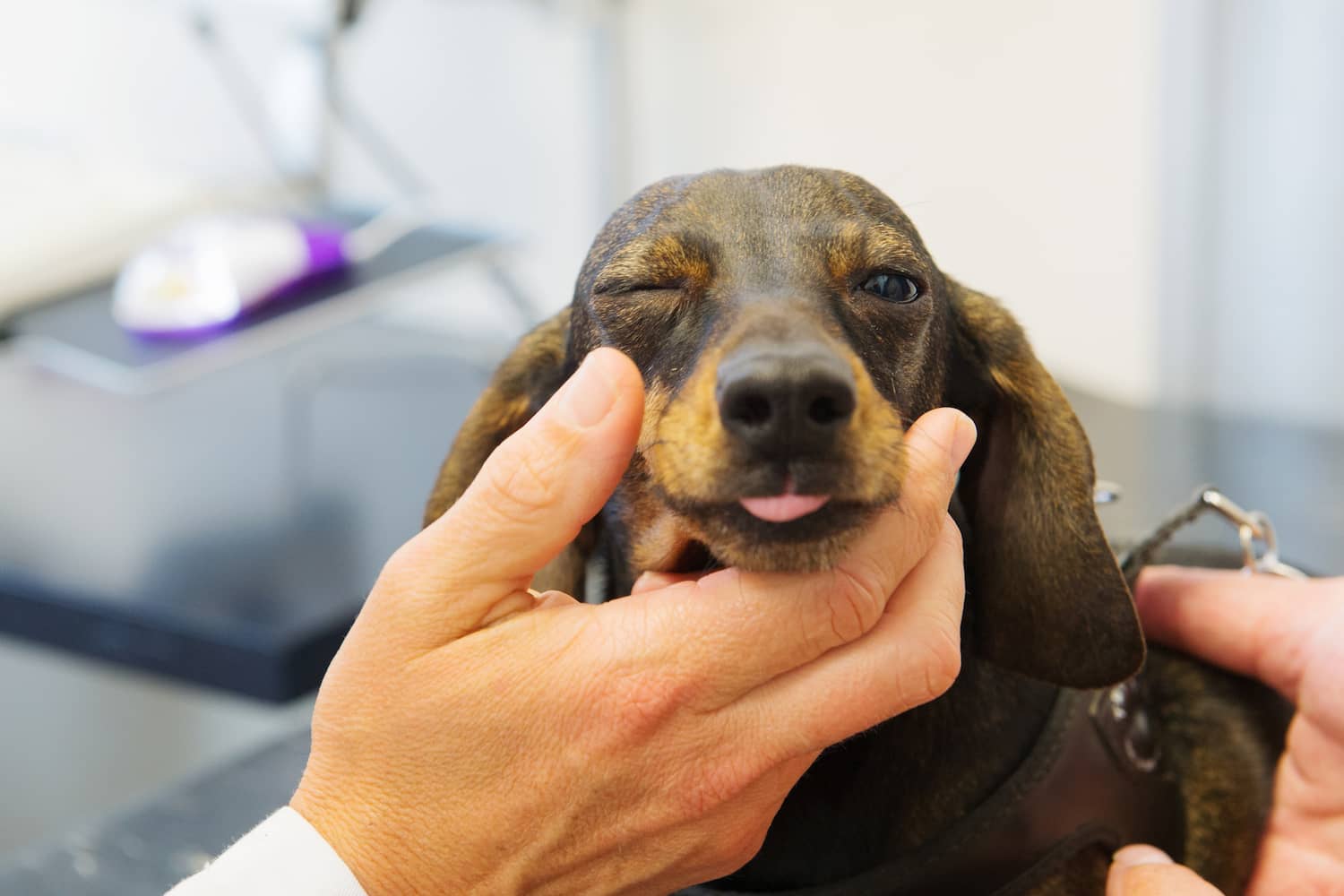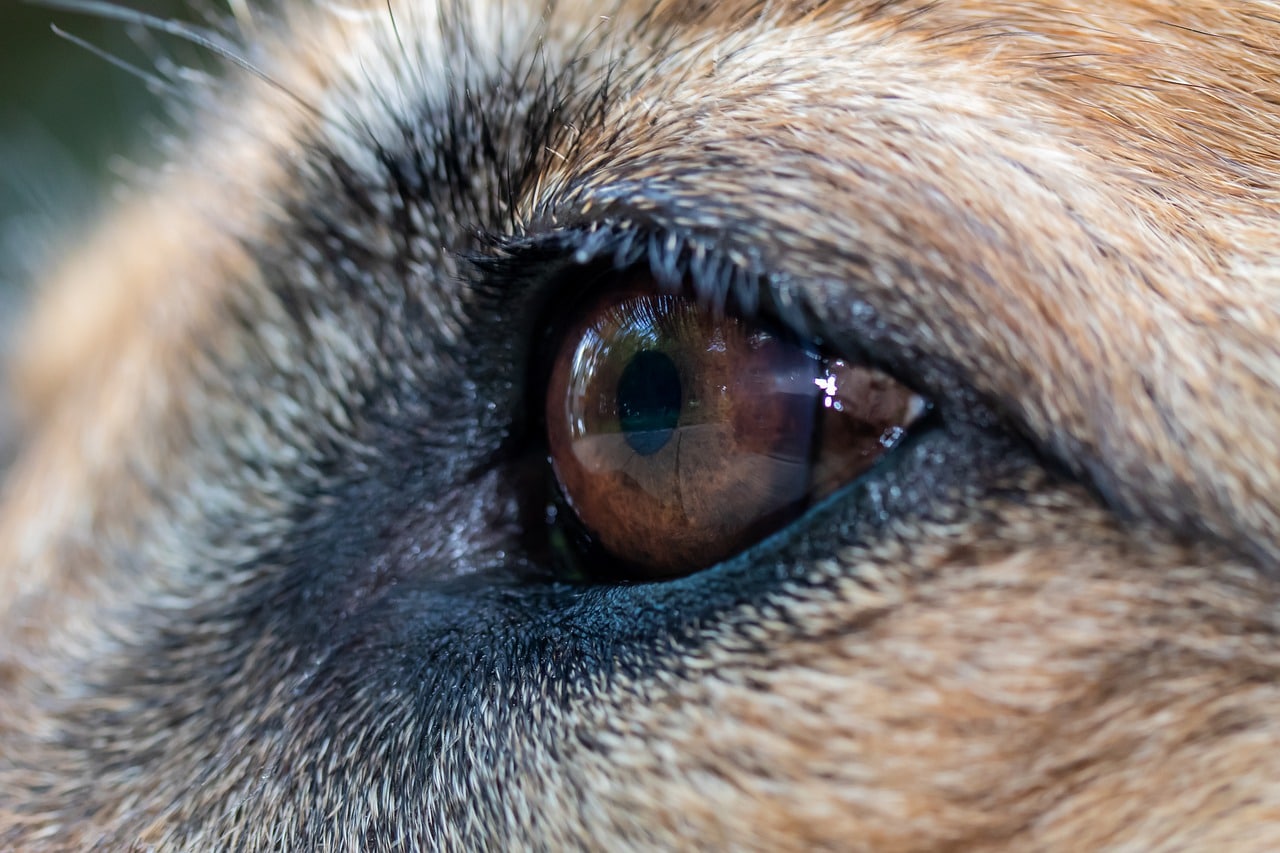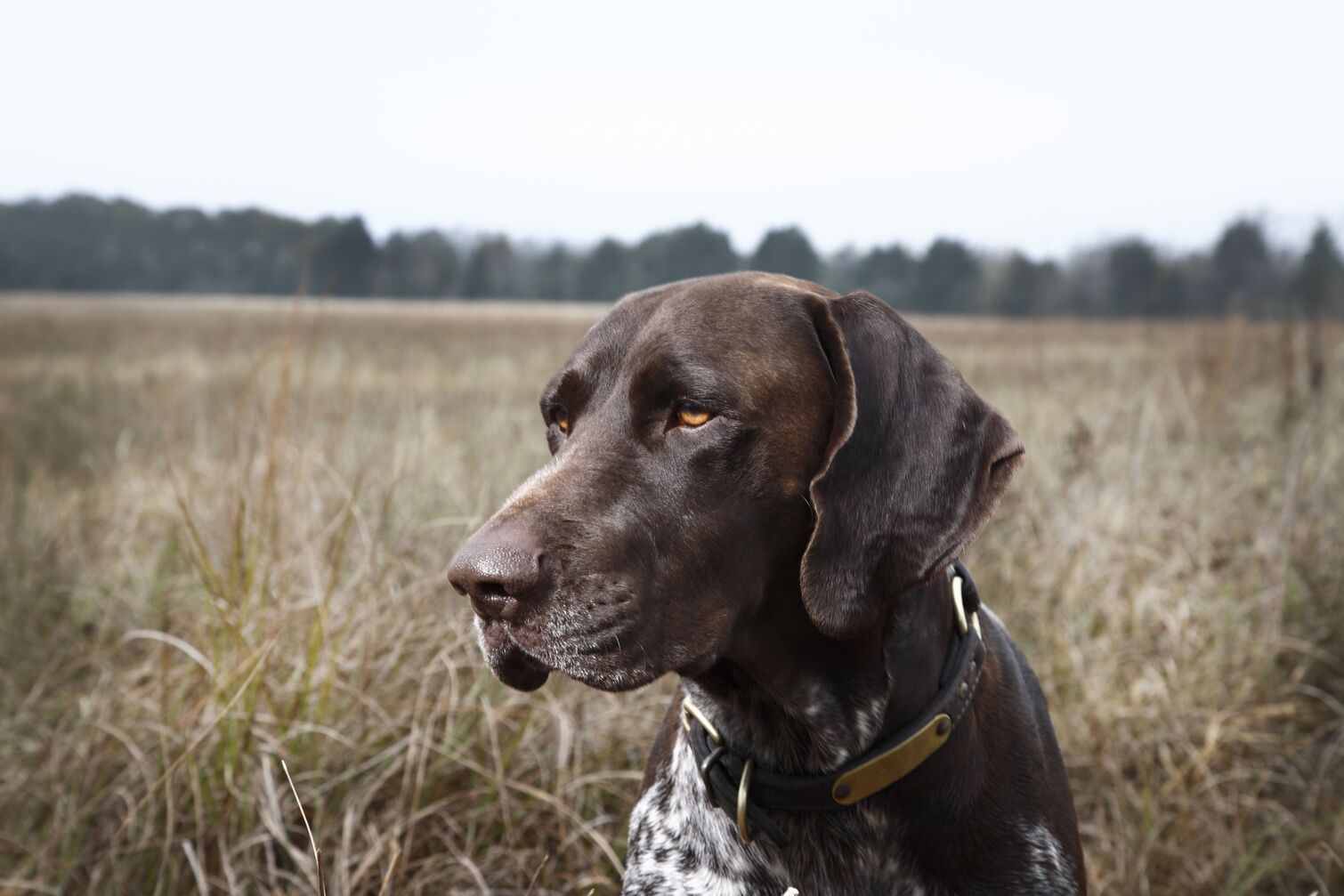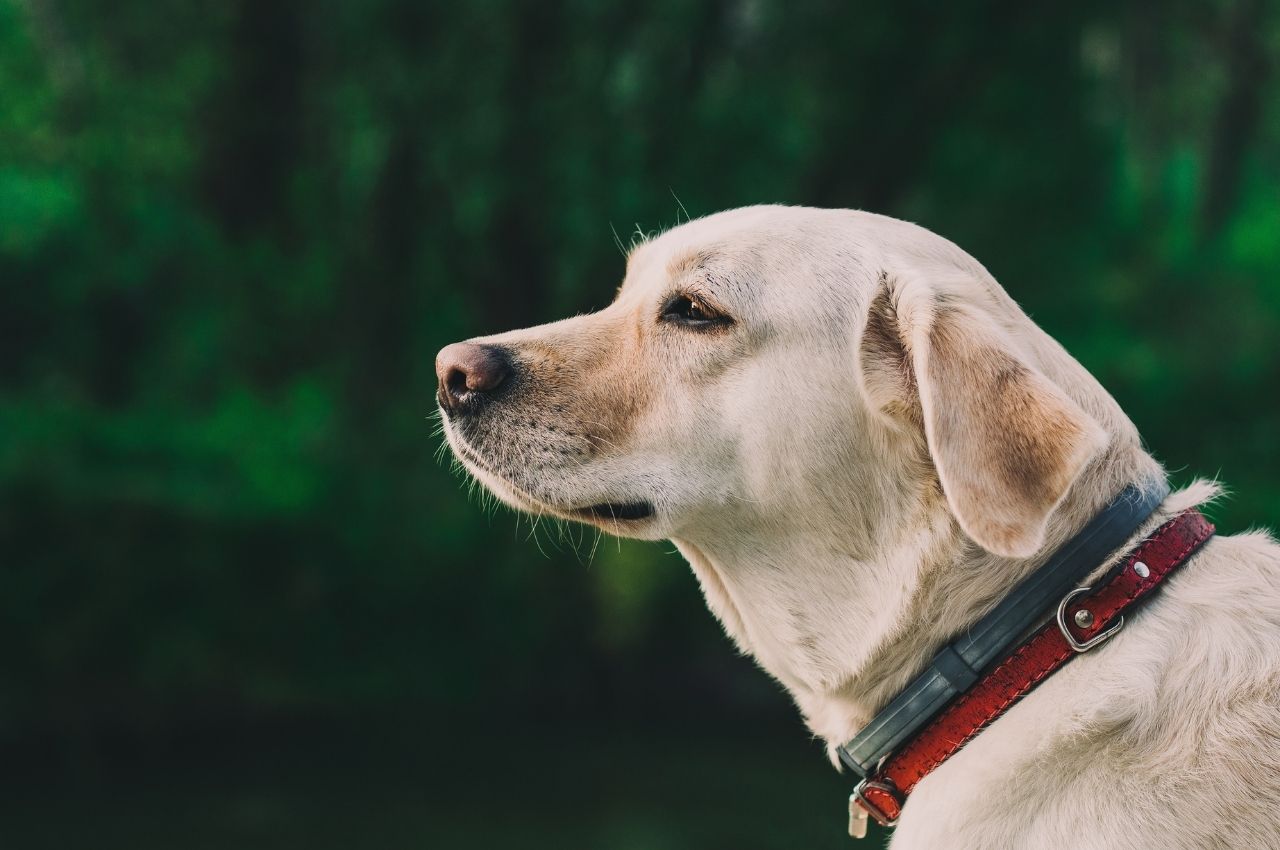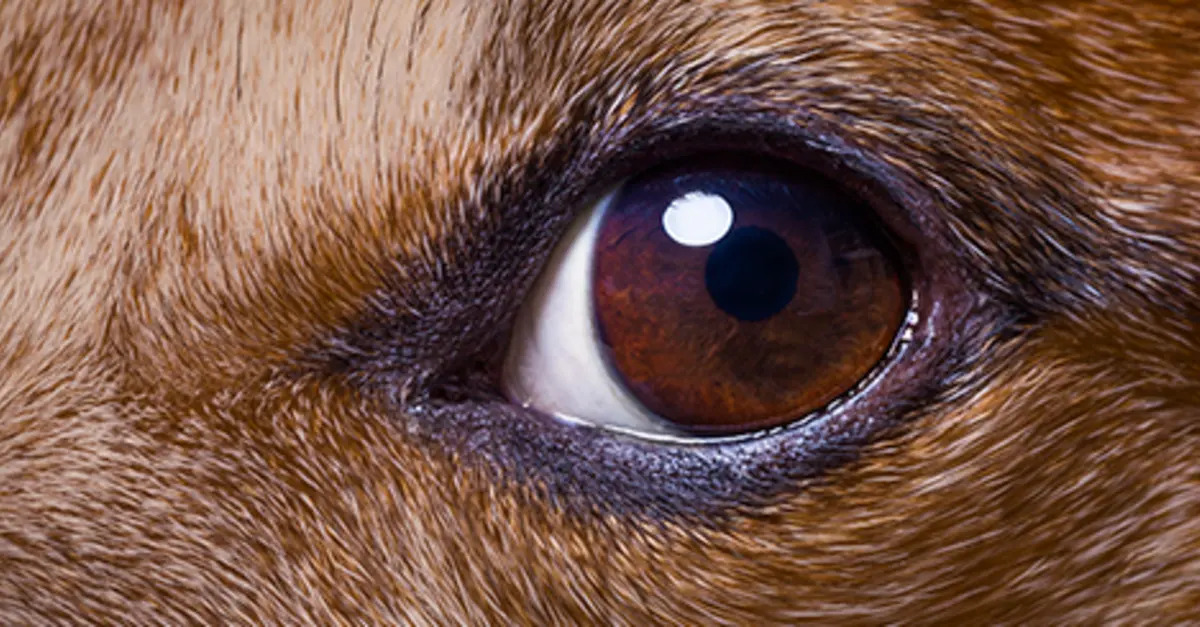Home>Health & Wellness>Common Health Issues>Eye and Ear Health>Why Does My Dog Have A Bump By Her Eye
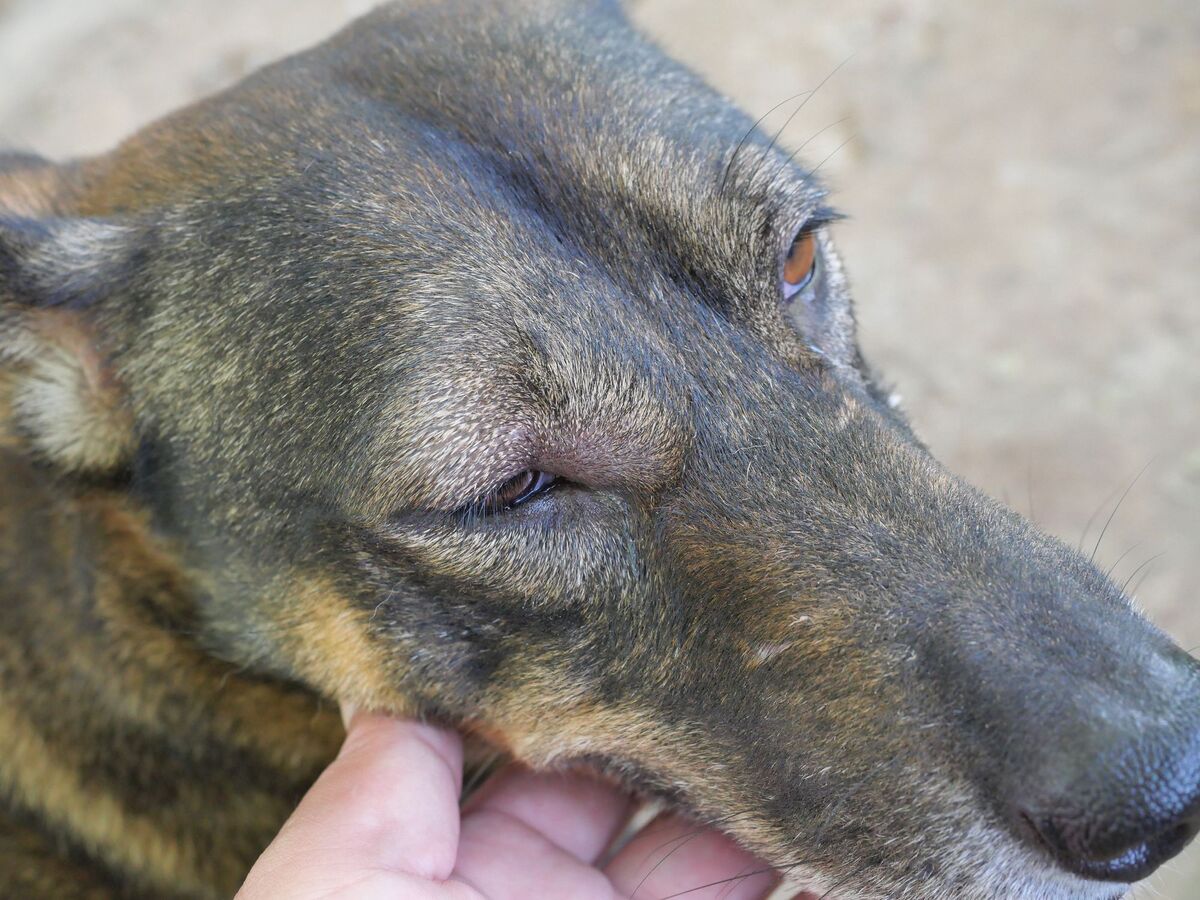

Eye and Ear Health
Why Does My Dog Have A Bump By Her Eye
Published: February 11, 2024
Learn about the possible causes of bumps near your dog's eye and how to maintain their eye and ear health. Find helpful tips and advice.
(Many of the links in this article redirect to a specific reviewed product. Your purchase of these products through affiliate links helps to generate commission for Pawsomeoldies.com, at no extra cost. Learn more)
Table of Contents
Introduction
Discovering a bump near your dog's eye can be a cause for concern and may prompt a range of questions and worries. As a pet owner, it's natural to feel a sense of responsibility for your furry friend's well-being, and noticing any unusual growth or swelling around their eye can be alarming. Understanding the potential causes, symptoms, and treatment options for these bumps is crucial for ensuring your dog's eye health and overall comfort.
In this comprehensive guide, we will delve into the common causes of bumps near a dog's eye, the symptoms to look out for, when to seek veterinary care, treatment options, and preventive measures. By gaining insight into these aspects, you will be better equipped to address any concerns related to your dog's eye health and provide them with the care they need.
Let's embark on a journey to explore the intricacies of eye health in dogs and gain a deeper understanding of the factors that can contribute to the development of bumps near their eyes. By the end of this guide, you will have a wealth of knowledge to help you navigate any potential challenges related to your dog's eye health, empowering you to make informed decisions and take proactive steps to ensure their well-being.
Read more: Why Does My Dog Have A Red Spot In Her Eye
Common Causes of Bumps by the Eye in Dogs
Bumps near a dog's eye can stem from various underlying causes, each requiring distinct approaches for diagnosis and treatment. Understanding these common causes is essential for identifying the root issue and providing appropriate care for your furry companion. Here are some prevalent factors that can lead to the development of bumps near a dog's eye:
-
Allergies: Dogs, like humans, can experience allergic reactions that manifest as bumps or swelling near the eyes. Allergens such as pollen, dust mites, or certain foods can trigger allergic responses, leading to discomfort and visible bumps around the eye area.
-
Insect Bites or Stings: Insects, including bees, wasps, or spiders, can inadvertently inflict bites or stings near a dog's eye, resulting in localized swelling or bumps. These reactions are often accompanied by redness and tenderness, signaling the need for prompt attention.
-
Eye Infections: Bacterial, viral, or fungal infections can affect a dog's eye, causing inflammation and the formation of bumps or cysts. Conditions like conjunctivitis or keratitis can give rise to these symptoms, necessitating thorough examination and targeted treatment.
-
Trauma or Injury: Accidental trauma or injury to the eye area can lead to the formation of bumps or lumps. This can occur due to rough play, collisions, or foreign objects impacting the eye, resulting in swelling and discomfort for the affected dog.
-
Tumors or Growths: In some cases, benign or malignant tumors can develop near a dog's eye, leading to the appearance of palpable lumps or bumps. These growths may require specialized diagnostic procedures to determine their nature and the appropriate course of action.
-
Blocked Tear Ducts: Obstruction or blockage of the tear ducts can cause fluid accumulation and the formation of bumps near the eye. This condition, known as epiphora, can result in noticeable swelling and discharge, indicating the need for veterinary assessment.
Understanding these common causes of bumps near a dog's eye is crucial for recognizing potential health issues and seeking timely intervention. By staying vigilant and observant, pet owners can play a proactive role in safeguarding their dog's eye health and overall well-being.
Symptoms to Look Out For
Identifying the symptoms associated with bumps near a dog's eye is pivotal in understanding the underlying causes and determining the appropriate course of action. By remaining attentive to these telltale signs, pet owners can promptly address any potential issues and ensure their dog's eye health is prioritized. Here are the key symptoms to look out for:
-
Swelling and Redness: Noticeable swelling or redness around the eye area can indicate the presence of a bump or localized inflammation. This visual cue often accompanies discomfort or sensitivity in the affected area, prompting the need for closer examination.
-
Discharge or Tearing: Unusual discharge, excessive tearing, or the presence of pus near the eye can signal an underlying issue such as infection or blocked tear ducts. Monitoring the consistency and frequency of discharge is essential for gauging the severity of the condition.
-
Changes in Behavior: Dogs experiencing discomfort due to bumps near their eyes may exhibit changes in behavior, such as rubbing or pawing at the affected eye, squinting, or avoiding bright lights. These behavioral shifts can serve as indicators of underlying discomfort or irritation.
-
Visible Bumps or Lumps: Palpable bumps, lumps, or cysts near the eye area should be carefully observed. These physical manifestations can vary in size and texture, and their presence warrants thorough assessment by a veterinary professional.
-
Excessive Scratching: Persistent scratching or rubbing of the eye area can signify discomfort or itching caused by the presence of a bump, allergic reactions, or underlying skin conditions. Monitoring your dog's scratching behavior can provide valuable insights into their level of discomfort.
-
Changes in Eye Appearance: Any alterations in the appearance of the affected eye, such as cloudiness, unusual pupil dilation, or changes in eye color, should be noted. These visual changes can indicate underlying issues that require prompt attention.
By remaining vigilant and attuned to these symptoms, pet owners can proactively address any concerns related to their dog's eye health. Timely recognition of these signs can facilitate early intervention and ensure that appropriate measures are taken to safeguard the well-being of their beloved canine companions.
When to Seek Veterinary Care
Recognizing the appropriate timing to seek veterinary care for your dog's eye health is crucial in addressing any concerns related to bumps near the eye. While certain mild symptoms may resolve on their own, certain indicators warrant immediate attention from a veterinary professional. Here are the key scenarios that signify the need for prompt veterinary care:
-
Persistent or Worsening Symptoms: If the bump near your dog's eye shows no signs of improvement or continues to worsen despite home care measures, it is imperative to seek veterinary guidance. Persistent swelling, redness, or discharge can indicate an underlying issue that requires professional assessment and targeted treatment.
-
Visible Discomfort or Pain: Dogs exhibiting signs of discomfort, such as pawing at the affected eye, rubbing it against surfaces, or displaying sensitivity to touch, should be evaluated by a veterinarian. Visible signs of pain or distress indicate the need for immediate attention to alleviate discomfort and address the underlying cause.
-
Sudden Behavioral Changes: Any abrupt changes in your dog's behavior, particularly those related to their interaction with the affected eye, should prompt a visit to the veterinarian. Behavioral shifts, such as increased agitation, reluctance to open the affected eye, or heightened sensitivity to light, warrant thorough examination to identify and address potential issues.
-
Development of Additional Symptoms: If your dog exhibits new symptoms alongside the bump near the eye, such as lethargy, loss of appetite, or unusual changes in their overall demeanor, it is essential to seek veterinary care promptly. These additional symptoms can provide valuable insights into the systemic impact of the underlying issue and necessitate comprehensive evaluation.
-
History of Eye Conditions: Dogs with a history of recurrent eye conditions, infections, or allergies may require expedited veterinary care upon the emergence of a new bump near the eye. Given their predisposition to eye-related issues, proactive assessment by a veterinarian can help prevent potential complications and ensure targeted management.
-
Concerns about Eye Health: As a responsible pet owner, any concerns or uncertainties regarding your dog's eye health, including the presence of a bump, warrant professional evaluation. Seeking veterinary care for thorough examination and expert guidance can offer peace of mind and ensure the best possible care for your canine companion.
By remaining attentive to these indicators and promptly seeking veterinary care when necessary, pet owners can prioritize their dog's eye health and take proactive steps to address any potential concerns. Timely intervention and expert guidance from a veterinary professional are instrumental in safeguarding the well-being and comfort of beloved canine companions.
Treatment Options
Upon identifying a bump near your dog's eye, it is essential to explore the available treatment options to address the underlying cause and alleviate any discomfort or health concerns. The appropriate course of action often depends on the specific diagnosis and the severity of the condition. Here are the key treatment options that may be recommended for addressing bumps near a dog's eye:
-
Medication and Topical Treatments: In cases where the bump is attributed to an underlying infection, inflammation, or allergic reaction, veterinarians may prescribe topical ointments, eye drops, or oral medications to target the root cause. These treatments are tailored to address specific conditions such as bacterial or fungal infections, allergic dermatitis, or inflammatory responses, aiming to reduce swelling, alleviate discomfort, and promote healing.
-
Surgical Intervention: In instances where the bump is indicative of a more complex issue, such as a tumor, cyst, or obstructed tear duct, surgical intervention may be necessary. Surgical procedures can involve the removal of the growth or the correction of underlying structural abnormalities, with the goal of restoring optimal eye health and function for the affected dog.
-
Warm Compress and Cleansing: For mild cases of localized swelling or inflammation, gentle warm compresses and regular cleansing of the affected area may be recommended. This approach can help reduce swelling, soothe discomfort, and promote drainage if necessary. Additionally, maintaining a clean and hygienic eye area is essential for preventing secondary infections and promoting overall healing.
-
Dietary and Environmental Management: In situations where allergic reactions contribute to the development of bumps near the eye, dietary adjustments and environmental modifications may be advised. Identifying and eliminating potential allergens from the dog's diet or living environment can help mitigate allergic responses, reduce the likelihood of recurrent bumps, and support long-term management of the condition.
-
Ongoing Monitoring and Follow-Up Care: Following the initiation of treatment, ongoing monitoring and regular follow-up care with a veterinarian are crucial. This allows for the assessment of treatment efficacy, the identification of any emerging concerns, and the adjustment of the treatment plan as needed. Close collaboration with the veterinary team ensures comprehensive care and optimal outcomes for the dog's eye health.
By considering these treatment options and collaborating closely with a veterinary professional, pet owners can address bumps near their dog's eye effectively and prioritize their beloved companion's well-being. Tailored treatment plans, diligent monitoring, and proactive management are instrumental in promoting optimal eye health and ensuring the comfort and vitality of canine companions.
Read more: Why Does My Dog Have One Dilated Eye?
Preventing Bumps by the Eye in Dogs
Preventing bumps near a dog's eye is a proactive endeavor that involves attentive care, environmental management, and strategic measures to mitigate potential risk factors. By implementing preventive strategies, pet owners can significantly reduce the likelihood of their canine companions developing bumps near the eye, thereby safeguarding their eye health and overall well-being.
Regular Eye Examinations
Scheduling routine eye examinations with a veterinarian is paramount in detecting early signs of eye-related issues and addressing them proactively. These comprehensive assessments allow for the identification of potential concerns, including the presence of bumps, inflammation, or underlying conditions that may impact the dog's eye health. By prioritizing regular eye check-ups, pet owners can stay ahead of potential issues and take preemptive measures to maintain optimal eye health for their furry friends.
Allergen Management
Managing potential allergens in the dog's environment is essential for mitigating allergic reactions that can lead to bumps near the eye. Identifying and minimizing exposure to common allergens such as pollen, dust mites, certain foods, or environmental irritants can help reduce the risk of allergic responses and associated swelling. Additionally, consulting with a veterinarian to explore allergy testing and tailored management strategies can further support proactive allergen management.
Eye Hygiene and Care
Maintaining proper eye hygiene and care practices is instrumental in preventing the development of bumps near the eye. Regularly cleaning the area around the eyes, using veterinarian-recommended eye wash solutions, and gently removing any accumulated debris or discharge can help minimize the risk of localized inflammation and potential blockages. By upholding diligent eye hygiene, pet owners can contribute to the prevention of common eye-related issues that may lead to the formation of bumps.
Read more: Why Does My Dog Have A Lazy Eye
Environmental Safety Measures
Creating a safe and hazard-free environment for dogs is crucial in preventing accidental trauma or injury to the eye area. Pet-proofing living spaces, securing potential hazards, and supervising interactions with objects or surfaces that pose a risk of eye injury can significantly reduce the likelihood of trauma-induced bumps. By fostering a safe and controlled environment, pet owners can mitigate the risk of eye-related injuries and their associated consequences.
Nutritional Support
Providing a balanced and nutritious diet that supports overall health and immune function can contribute to the prevention of bumps near the eye. High-quality, well-balanced dog food that meets the specific nutritional needs of the pet can bolster their immune system and minimize the likelihood of allergic reactions or inflammatory responses that may lead to eye-related issues. Consulting with a veterinarian to determine the most suitable dietary choices for the dog can further optimize their overall well-being and eye health.
Regular Grooming and Maintenance
Incorporating regular grooming practices, including gentle brushing and inspection of the eye area, can aid in the early detection of any abnormalities or potential concerns. By maintaining a consistent grooming routine, pet owners can promptly identify and address any emerging issues, such as the presence of foreign objects, skin irritations, or early signs of inflammation. This proactive approach to grooming supports the prevention of eye-related complications and the development of bumps near the eye.
By embracing these preventive measures and integrating them into the daily care and management of their canine companions, pet owners can play a pivotal role in preventing bumps near the eye. Through attentive care, proactive strategies, and collaboration with veterinary professionals, pet owners can create a supportive environment that prioritizes their dog's eye health and fosters a thriving, comfortable, and vibrant life for their beloved furry friends.
Conclusion
In conclusion, the presence of bumps near a dog's eye can be a source of concern for pet owners, prompting a range of questions and uncertainties about their beloved companion's well-being. By delving into the common causes, symptoms, treatment options, and preventive measures related to these bumps, pet owners can gain valuable insights to navigate potential challenges and prioritize their dog's eye health.
Understanding the multifaceted nature of bumps near a dog's eye, including their potential origins such as allergies, infections, trauma, or structural abnormalities, empowers pet owners to recognize early signs of concern and seek timely veterinary care. By remaining vigilant and attentive to symptoms such as swelling, redness, discharge, and changes in behavior, pet owners can proactively address any emerging issues and ensure their dog receives the necessary care and attention.
The decision to seek veterinary care for a dog's eye health should be guided by the presence of persistent or worsening symptoms, visible discomfort, sudden behavioral changes, or concerns about the overall well-being of the pet. Timely intervention and expert guidance from veterinary professionals are instrumental in addressing potential issues and safeguarding the comfort and vitality of canine companions.
Exploring the available treatment options, including medication, surgical intervention, warm compresses, and dietary management, provides pet owners with a comprehensive understanding of the potential pathways to address bumps near a dog's eye. By collaborating closely with veterinary professionals and prioritizing ongoing monitoring and follow-up care, pet owners can ensure that their dog receives tailored treatment and support for optimal eye health.
Furthermore, embracing preventive measures such as regular eye examinations, allergen management, eye hygiene and care, environmental safety measures, nutritional support, and regular grooming practices empowers pet owners to create a supportive environment that minimizes the risk of bumps near the eye. By integrating these proactive strategies into their daily care routines, pet owners can play a pivotal role in preventing potential eye-related issues and fostering a thriving, comfortable, and vibrant life for their beloved furry friends.
In essence, by gaining a deeper understanding of the complexities surrounding bumps near a dog's eye and embracing proactive measures to address and prevent potential concerns, pet owners can navigate their role as advocates for their dog's eye health with confidence and compassion. Through informed decision-making, attentive care, and collaboration with veterinary professionals, pet owners can ensure that their canine companions enjoy optimal eye health and a high quality of life.
